Historical adit

Beneath the Zakázanka Path, near the Great Aviary, an entrance into a historical adit can be found in the rock face. This adit, dating back to the mid-19th century and several dozen metres in length, was probably excavated with the intention of extracting iron ore. During the Second World War, it served as an air-raid shelter. To this day, it remains shrouded in legend.
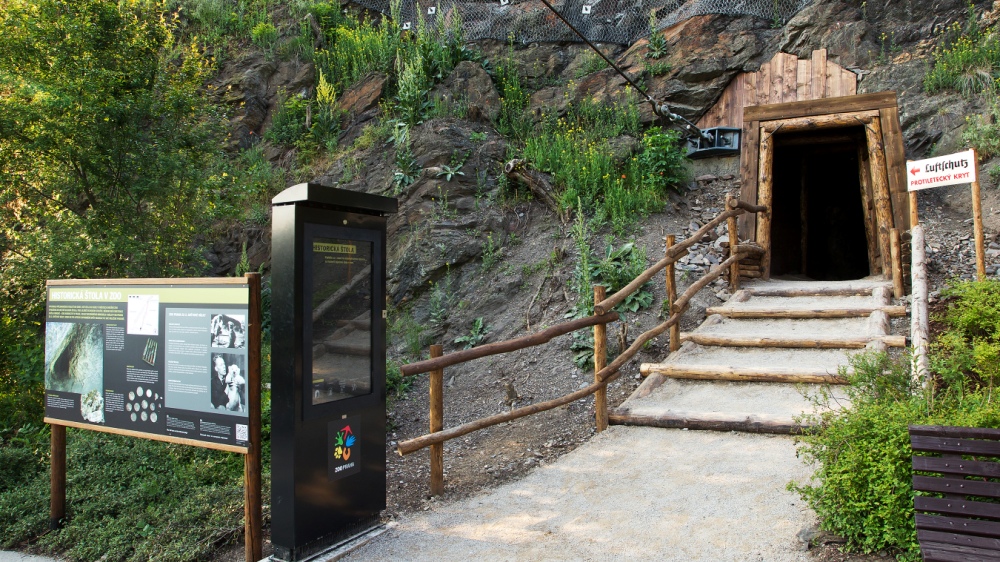
Historical adit, photo: Tomáš Adamec, Prague Zoo
More than a century and a half has passed since a 80-metre-long adit was driven into the rocky outcrop. During its existence, it witnessed the era of mining in Prague, the discovery of an unknown mineral, as well as the air raids on the city during the Second World War. After decades of oblivion, it has been presented once again in its wartime form since 2014.
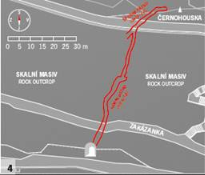
LEGENDS ABOUT THE ADIT
The mysterious passageway buried in the rock has always stimulated the imagination, all the more so since it was sealed off by a wall just ten metres from the entrance. Legend had it that it was an old wine corridor, continuing beyond the wall to St Clare’s Chapel and vineyard, or leading all the way to the Troja Château. Part of the wall within the adit was removed some time after the Second World War, but no one dared to venture deeper into the rock. The only known attempt allegedly ended in gas poisoning, and rumours spread that poisonous methane was trapped inside. The entrance was blocked off, and the adit faded from memory.
In pursuit of ore and shale
The adit was driven in the mid-19th century, during a period of intensive exploration for new resources to support the developing industry. A seam of iron ore is present here, but the likely target of the intended mining was pyrite shale. This was used in the production of wfuming sulphuric acid, which was essential for the textile industries in Germany and England.
Rare sulphates
Long before the zoo was founded, the adit had already made its mark in Czech mineralogy. Among the sulphates deposited on its walls, Josef Klvaňa, a mineralogist from the National Museum, found several types previously unknown in the Czech lands, and even one entirely new to science. He named it paracoquimbite, now known as slavikite.
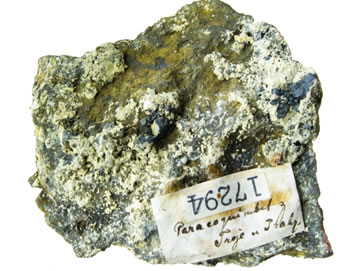
Photo: Dalibor Velebil
Bitter salt
Another interesting mineral found in the adit is epsomite, commonly known as “bitter salt”. It became known for its digestive properties as an ingredient in the famous Czech medicinal mineral water “Šaratice”. When viewed under an electron microscope, the mineral reveals needle-like crystals forming the basic structure of its clusters.
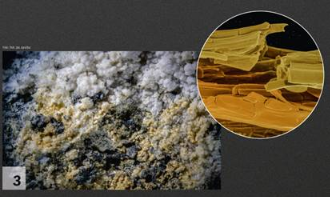
Photo: Petr Jan Juračka
Air-raid shelter
During the Second World War, the adit was adapted for use as an air-raid shelter, furnished with wooden benches, fire-fighting equipment and kerosene lamps. The section used as a shelter reached down to a depth of ten metres. The front area was reserved for fire-fighters and men on duty, while older people and women with children sat at the back. During the Prague uprising of May 1945, women and children from the zoo took refuge in the shelter, while the men dug out the weapon’s they had hidden in the zoo and joined the resistance against the Nazis.
New discoveries
For many years, the adit remained closed, and its former use was almost forgotten. A renewed wave of interest was sparked in 2012 by the Director of Prague Zoo, Miroslav Bobek. Among the items he discovered were several small coins from the Nazi Protectorate and a magazine of ball cartridges, possibly linked to the Czechoslovak wartime resistance.
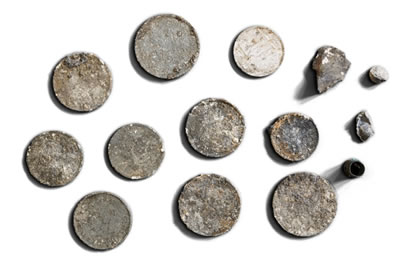
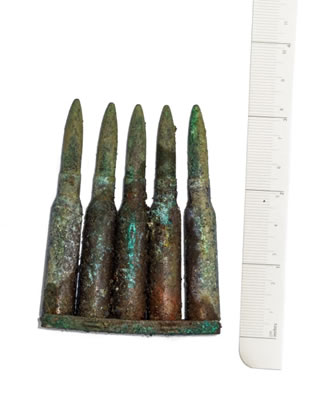
Photo: Tomáš Adamec, Zoo Praha Photo: Miroslav Bobek, Zoo Praha
ZOOPRAHA.CZ
Contacts
- The Prague zoological garden
U Trojskeho zamku 120/3
171 00 Praha 7
Phone.: (+420) 296 112 230 (public relations department)
e-mail: zoopraha@zoopraha.cz
Others








